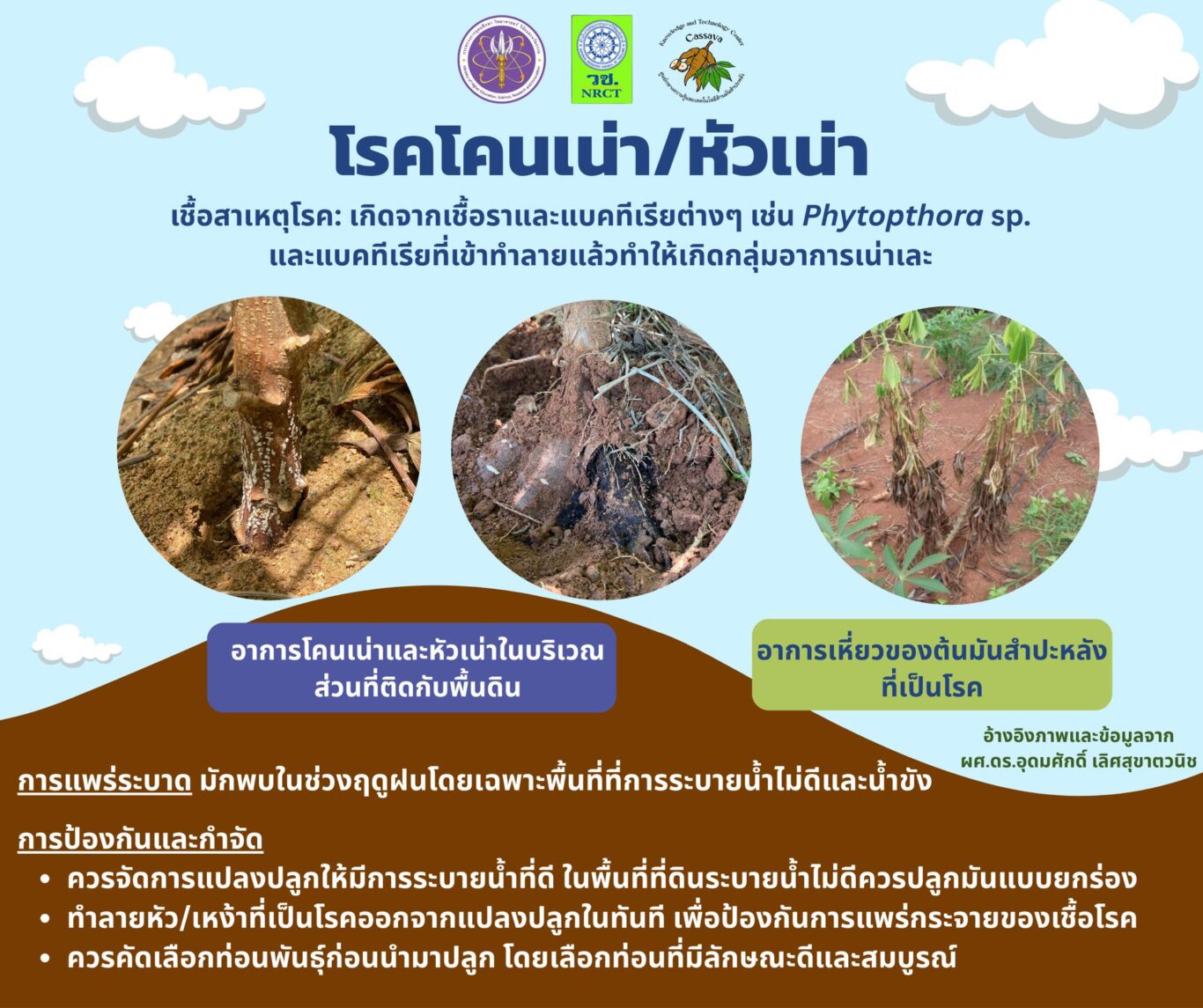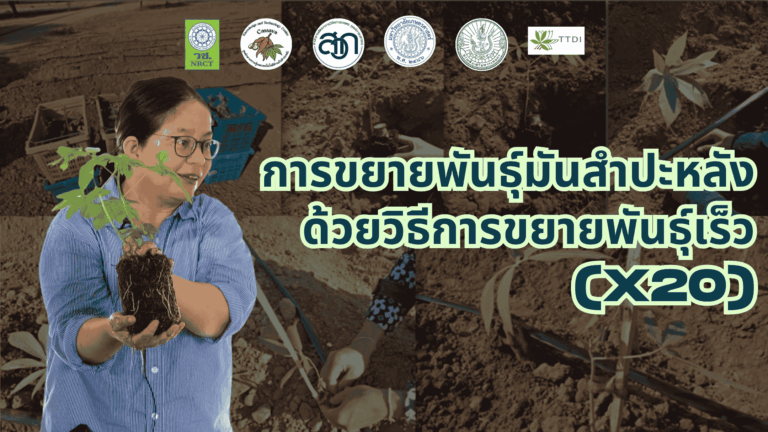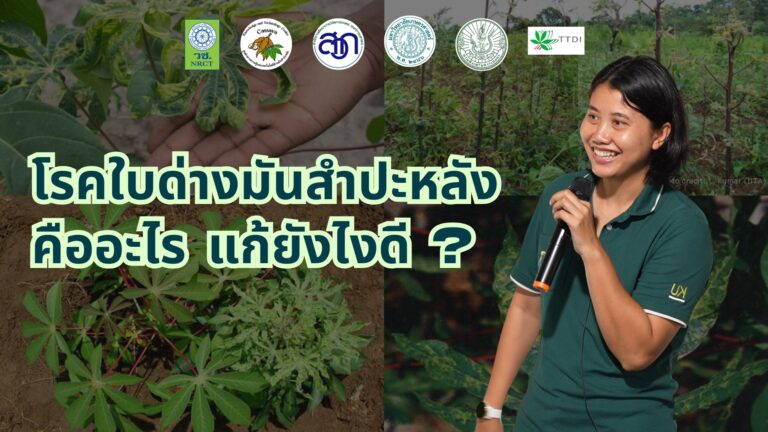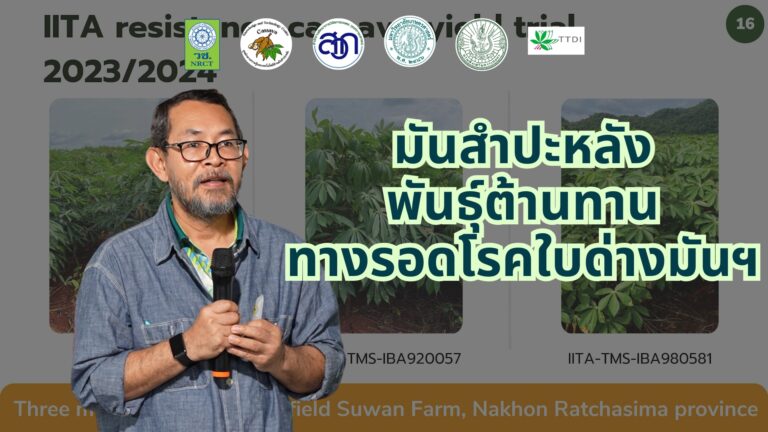
Cassava Root and Tuber Rot Disease
Cassava root and tuber rot is a common disease that often spreads rapidly during the rainy season. The primary cause is poor field management or soils with poor drainage, which lead to waterlogging and moisture retention. These conditions provide a favorable environment for certain fungi and bacteria that cause soft rot. In some cases, the disease may also be aggravated by secondary infections from other fungi.
The damage becomes more severe when waterlogging occurs during the starch accumulation stage of cassava tubers, ultimately reducing the yield for farmers.
Prevention and Control
- Select healthy planting cuttings that are free from rot or disease symptoms.
- Ensure proper field management with good drainage. In areas with water-retentive soil, planting on raised beds or ridges is recommended.
- If an outbreak occurs, immediately remove infected plants from the field to prevent the spread of pathogens to healthy plants.
Reference: Image and information by Asst. Prof. Udomsak Lertsuchatavanich





